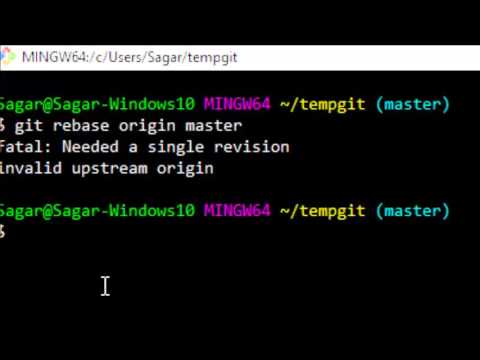Needed A Single Revision
Writing is a process that involves several stages, and one of the most important steps is revision. Revising written work is crucial to producing high-quality content that effectively communicates ideas and engages readers. Whether you are a student working on an essay, a professional writing a report, or a novelist crafting a story, revising your work is essential in order to refine and improve your writing.
Understanding the Purpose of Revision
The purpose of revision is to polish and enhance your written work. It allows you to revisit your initial draft with a fresh perspective, identify areas for improvement, and make necessary changes to ensure clarity and coherence in your writing. Revision helps you to refine your ideas, strengthen your arguments, and enhance the overall structure and organization of your work.
Identifying Areas for Improvement in the Initial Draft
When revising your work, it is important to objectively assess your initial draft and identify areas that need improvement. This can include analyzing the overall structure and organization of your writing, evaluating sentence and paragraph structure, checking for clarity and coherence, reviewing grammar, spelling, and punctuation, as well as assessing the proper use of vocabulary and style.
Techniques for Evaluating the Overall Structure and Organization
To evaluate the overall structure and organization of your written work, start by examining the introduction. Does it effectively grab the reader’s attention and provide a clear thesis statement? Make sure that each paragraph supports and develops your main ideas coherently. Evaluate the flow of your writing and ensure that ideas are logically connected. Consider the use of headings and subheadings to enhance the organization and readability of your work.
Analyzing Sentence and Paragraph Structure
Sentence and paragraph structure are important elements of effective writing. During the revision process, make sure that your sentences are clear, concise, and grammatically correct. Vary sentence length and structure to maintain reader engagement. Additionally, analyze paragraph structure to ensure that each paragraph focuses on a single main idea and has a clear topic sentence.
Checking for Clarity and Coherence
Clarity and coherence are key aspects of effective written communication. During the revision process, carefully review your work for any unclear or confusing sections. Make sure that your ideas are conveyed in a concise and understandable manner. If necessary, rephrase sentences or paragraphs to enhance clarity. Additionally, check the flow of your writing to ensure that ideas are logically connected and transitions are smooth.
Reviewing Grammar, Spelling, and Punctuation
Grammar, spelling, and punctuation errors can weaken the impact and credibility of your writing. Take the time to carefully review your work for any grammar or spelling mistakes. Pay attention to common errors such as subject-verb agreement, verb tenses, and word choice. Additionally, check for proper punctuation usage, including commas, periods, and apostrophes.
Ensuring Proper Use of Vocabulary and Style
Choosing the right vocabulary and style is crucial in conveying your ideas effectively. During the revision process, assess the appropriateness and clarity of your word choices. Consider whether your language is too formal or informal for your target audience. Additionally, ensure consistency in your writing style, such as using active voice or passive voice consistently throughout your work.
Seeking Feedback from Peers or Professionals
Revising your work can be a challenging task, especially when it comes to evaluating your own writing objectively. Seeking feedback from peers or professionals can provide valuable insights and suggestions for improvement. Share your revised work with others and ask for their feedback. Consider joining writing groups or seeking guidance from writing tutors or editors to further enhance the quality of your work.
Finalizing the Revised Version for Publication or Submission
Once you have carefully revised your work, it is important to go through a final proofreading stage before publication or submission. Proofread your work for any remaining errors or inconsistencies. Pay attention to formatting, citation style, and bibliography if applicable. Ensure that your work is properly referenced and follows any guidelines or requirements provided by the intended audience or publisher.
FAQs
-Q: What does “Needed a single revision submodule” mean in git?
A: “Needed a single revision submodule” is a message that can be encountered while using git, specifically during submodule operations. It indicates that a submodule is expected to be at a particular revision but is not found in the submodule path.
-Q: What should I do if I am unable to find the current revision in the submodule path?
A: If you are unable to find the current revision in the submodule path, it is recommended to check if the submodule was properly initialized and configured. Ensure that the submodule repository exists and is accessible. If necessary, update the submodule configuration or initialize it again.
-Q: How can I resolve the error “Git rebase invalid upstream”?
A: The error “Git rebase invalid upstream” usually occurs when the upstream branch specified does not exist or is misspelled. To resolve this error, confirm that the upstream branch is correctly specified and exists in the remote repository. Double-check the spelling and ensure that the branch name is accurate.
-Q: What does “Fatal invalid upstream HEAD” mean in Git?
A: “Fatal invalid upstream HEAD” is an error message that can appear in Git when attempting to perform certain operations, such as merging or rebasing. It indicates that the specified upstream branch or commit cannot be identified or does not exist. Make sure to verify the upstream reference, ensuring it is valid and available.
-Q: Why is a single revision needed in the writing process?
A: A single revision is needed in the writing process to refine and improve the initial draft. It allows writers to assess their work objectively and make necessary changes to enhance clarity, coherence, and overall quality. Revising written work ensures that ideas are effectively communicated, arguments are strengthened, and errors or inconsistencies are corrected before publication or submission.
In conclusion, revising written work is an essential step in the writing process. It enables writers to refine and enhance their initial drafts, ensuring clarity, coherence, and overall quality. By carefully evaluating and addressing areas for improvement, such as structure, grammar, and style, writers can produce high-quality content that effectively communicates their ideas to readers. Seeking feedback from peers or professionals further enhances the revision process, providing additional perspectives and suggestions. By finalizing the revised version through proofreading and adherence to guidelines, writers can confidently publish or submit their work. Remember that revision is not just about correcting errors; it is a means to improve and elevate your writing to its fullest potential.
Fatal Needed A Single Revision Invalid Upstream Origin In Git
Keywords searched by users: needed a single revision Needed a single revision submodule, Unable to find current revision in submodule path, Git rebase invalid upstream, Fatal invalid upstream HEAD 2
Categories: Top 72 Needed A Single Revision
See more here: nhanvietluanvan.com
Needed A Single Revision Submodule
When it comes to writing, revision is undoubtedly an essential step in the process. It allows us to polish our work, refine our ideas, and ensure that our message is effectively conveyed. However, the revision process can often be time-consuming and overwhelming, particularly when dealing with lengthy documents or multiple contributors. In such cases, a single revision submodule is crucial for streamlining the revision process. In this article, we will explore the key benefits of implementing a single revision submodule and answer some frequently asked questions regarding its adoption.
What is a Single Revision Submodule?
A single revision submodule is a specialized tool or module that allows for easier and more efficient collaboration during the revision process. It serves as a centralized platform where writers, editors, and contributors can access and provide feedback on a document. This submodule ensures that everyone involved is working on the most up-to-date version of the material, reducing the likelihood of confusion or redundant work.
Benefits of a Single Revision Submodule:
1. Enhanced Collaboration: The submodule provides a platform where multiple individuals can collaborate simultaneously, making it easy to track changes, suggestions, and comments. This real-time collaboration eliminates the need for back-and-forth emails or cumbersome file-sharing methods.
2. Time-saving: By centralizing the revision process, a single revision submodule reduces the time spent searching for documents, comparing different versions, and compiling feedback. Instead, all changes and suggestions are consolidated in one place, ensuring efficiency and saving precious time for all stakeholders involved.
3. Version Control: With the submodule, every revision is stored chronologically, allowing writers and editors to easily navigate through different versions and retrieve earlier drafts if necessary. This feature simplifies the process of reviewing changes, comparing revisions, and understanding the evolution of the document.
4. Clear Communication: The submodule enables transparent and effective communication between writers and editors. Through the implementation of a comment system, contributors can provide specific feedback, ask questions, and engage in discussions, fostering a collaborative and iterative revision process.
5. Increased Accuracy: A single revision submodule can help avoid errors and inconsistencies by providing oversight and clarity throughout the editing phase. The submodule’s notifications and tracking systems ensure that all contributors are aware of ongoing revisions, reducing the possibility of overlooking changes or conflicting edits.
FAQs:
Q: Is a single revision submodule suitable for all types of writing?
A: Yes, a single revision submodule can be beneficial for any type of writing, including academic papers, articles, reports, and even creative writing. It streamlines the revision process, regardless of the length or complexity of the document.
Q: Does a single revision submodule replace the need for human editors?
A: No, a single revision submodule should be seen as a tool that enhances collaboration and efficiency during the revision process. Human editors still play a crucial role in providing in-depth feedback, ensuring coherence, and maintaining the overall quality of the document.
Q: Are there any specific submodules available for different writing platforms?
A: Yes, many popular writing platforms, such as Google Docs and Microsoft Word, offer built-in revision submodules that allow users to track changes, suggest edits, and comment on a document. Additionally, there are third-party tools specifically designed to streamline revision processes, with features tailored to the needs of professional writers or specific industries.
Q: How can I convince my team or organization to adopt a single revision submodule?
A: Highlight the benefits mentioned above, such as enhanced collaboration, time-saving, and improved accuracy. Emphasize how implementing a single revision submodule will streamline the workflow, reduce errors, and ultimately increase the quality of the final product. Also, provide examples or case studies demonstrating its success in similar environments or industries.
In conclusion, a single revision submodule is a valuable tool for writers and editors, enabling efficient collaboration and enhancing the overall revision process. By centralizing document editing, it saves time, promotes clear communication, and ensures accuracy. It is an investment that organizes and optimizes the revision phase, ultimately resulting in improved writing quality and productivity.
Unable To Find Current Revision In Submodule Path
Git, the popular version control system, provides a powerful feature called submodules that allows you to include other repositories within your main project. However, sometimes you may encounter an error message stating “Unable to find current revision in submodule path.” This error can be frustrating, especially if you are new to working with submodules. In this article, we will delve into the details of this error, explore its potential causes, and provide solutions to help you resolve the issue.
Understanding the Error:
When you see the message “Unable to find current revision in submodule path,” it means that Git is unable to locate the specified revision or commit in the submodule path you provided. This generally occurs when you have made changes to the submodule repository (such as updating or removing it) but have not updated the main project to reflect those changes.
Potential Causes:
1. Outdated Submodule Reference: One common cause of this error is that the submodule reference in your main project’s Git configuration is outdated. This can happen if you have updated the submodule externally but have not updated the reference within the main project.
2. Deleted or Renamed Submodule: If you have deleted or renamed the submodule repository, Git will not be able to find the previous references, resulting in the error message. This typically occurs when you haven’t properly updated your main project to reflect the changes made to the submodule.
3. Submodule Not Cloned or Initialized: Another possible cause is that the submodule was never cloned or initialized in the first place. If the submodule’s repository has not been properly set up, Git will be unable to find the required revisions.
Solutions:
1. Updating Submodule Reference:
To resolve this issue, start by navigating to the directory of the main project in your terminal or command prompt. Then, use the following command to update the submodule reference:
“`shell
git submodule update –init
“`
This command ensures that the submodule reference is correctly updated to the latest revision. Once executed, the submodule should be able to find the required revision, resolving the error.
2. Resetting Submodule:
If the first solution did not work or you are still encountering the error, you can try resetting the submodule. To do this, execute the following commands:
“`shell
git submodule deinit
git submodule update –init
“`
Replace `
3. Recreating Submodule:
In certain cases, if the submodule repository has been deleted or renamed, you will need to recreate it. First, remove the reference to the submodule from your main project using:
“`shell
git submodule deinit
git rm
“`
Next, navigate to your submodule repository and execute:
“`shell
git init
git add .
git commit -m “Initial commit”
“`
Now you can re-add the submodule to your main project using:
“`shell
git submodule add
“`
Replace `
FAQs:
Q: Can I avoid encountering this error in the future?
A: Yes, to prevent this error, it is essential to ensure that you always update the submodule reference within your main project after making changes to the submodule repository.
Q: Does this error affect the functionality of my main project?
A: No, this error primarily relates to the submodule and its revisions. However, it can hinder the proper functioning of features dependent on the submodule.
Q: Are there any GUI tools available to manage submodules?
A: Yes, many Git GUI clients offer submodule management features that can simplify submodule addition, configuration, and updates. Some popular GUI clients include SourceTree, GitKraken, and GitHub Desktop.
In conclusion, encountering the “Unable to find current revision in submodule path” error can be frustrating, but with the appropriate solutions outlined in this article, you should be able to resolve the issue. Remember to update submodule references and properly initialize or recreate submodules as needed to ensure a smooth and error-free Git workflow.
Images related to the topic needed a single revision

Found 33 images related to needed a single revision theme





Article link: needed a single revision.
Learn more about the topic needed a single revision.